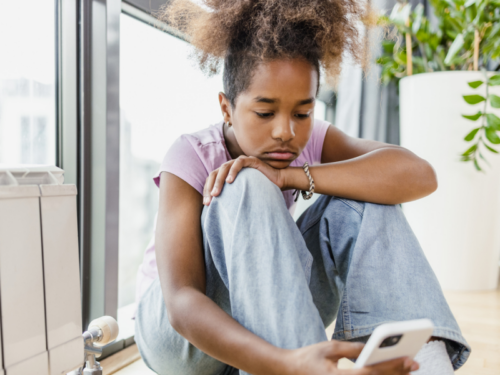
Table of Contents
Emotion Wheel: What It Is and How to Use It
Written By: Charlie Health Editorial Team

Clinically Reviewed By: Dr. Don Gasparini
September 28, 2023
6 min.
You can use the emotion wheel to improve communication and build emotional awareness. Keep reading to learn how to use this tool.
Learn more about our Clinical Review Process
Table of Contents
What is the emotion wheel?
The emotion wheel, also known as the feelings wheel, is a visual representation of various emotions organized in a circular, wheel-like format. The wheel typically divides emotions into different primary categories and then further breaks them into more nuanced emotional states.
An emotion wheel is a tool designed to help people understand their emotions and the emotions of others. It lays out a range of emotions to help people identify their feelings more accurately. By using an emotion wheel, people can develop a better vocabulary for expressing their emotions and navigating their emotional experiences, leading to better emotional awareness, emotional intelligence, and emotional regulation.
The specific design and categorization of emotions on an emotion wheel may vary depending on the model or framework used. Commonly, it starts with a few primary or core emotions, such as happiness, sadness, anger, fear, and surprise. From each basic emotion, it then branches into subtle or complex emotions like contentment, jealousy, excitement, or shame. Some emotion wheels also include intensity levels, allowing users to gauge the strength of their emotions.
An emotion wheel can be a helpful tool in therapy, counseling, conflict resolution, and self-improvement contexts. It encourages people to better understand their emotional states, leading to improved emotional self-awareness, emotional regulation, and communication in interpersonal relationships.

What are the emotions on the emotion wheel?
The emotions on an emotion wheel can vary depending on the specific model or framework used, and different variations of emotion wheels are available. The list below outlines some emotions commonly featured on emotion wheels, but is not exhaustive. Here are some common categories and emotions often included on an emotion wheel:
Primary emotions (core emotions)
- Happiness
- Sadness
- Anger
- Fear
- Surprise
- Disgust
Secondary emotions (derived from a primary emotion)
- Joy
- Grief
- Frustration
- Anxiety
- Anticipation
- Contempt
Tertiary emotions (more complex emotions)
- Ecstasy
- Sorrow
- Irritation
- Apprehension
- Amazement
- Revulsion
Additional emotions
- Love
- Envy
- Jealousy
- Excitement
- Guilt
- Shame
- Pride
- Regret
- Confusion
- Sympathy
- Empathy
- Compassion
Join the Charlie Health Library
Get mental health updates, research, insights, and resources directly to your inbox.
You can unsubscribe anytime.
What can the emotion wheel help with?
The emotion wheel is a versatile tool that can benefit people in many ways. As mentioned, it primarily helps people understand and manage their emotions, contributing to greater emotional self-awareness. By accurately identifying and labeling emotions through the wheel, people can develop effective strategies for emotion regulation, helping them cope with stress, anxiety, anger, and other intense feelings or mental health conditions.
The emotion wheel can also help promote more transparent and open communication, providing a common language for discussing feelings. This improved communication can be instrumental in conflict resolution and relationship-building, fostering empathy and understanding among people. In essence, the emotion wheel is a valuable tool for anyone seeking to navigate the complex terrain of emotions, improving their overall well-being and interpersonal interactions.
While the emotion wheel is a visual aid that people can use independently, it is not a standalone solution for managing mental health. Licensed mental health providers may use the emotion wheel in therapy to explore and process emotions—a context where many people find the skill more effective. For those who want to use the emotion wheel to better manage their feelings or improve communication, talking with a mental health professional may be helpful to ensure it is applied most effectively.
Who is the emotion behavior wheel for?
In short, everyone. The emotion wheel is a tool that can be helpful for anyone interested in gaining a better understanding of their emotions or someone else’s. Individuals can use it as a personal tool for self-reflection and self-improvement.
The tool is also commonly used by therapists and counselors. It is a visual aid that can be seamlessly integrated into therapy sessions to assist clients in recognizing and delving into their emotions, fostering emotional exploration and regulation.
Teachers and educators can also find value in introducing the emotion wheel to their students. It serves as a valuable resource for teaching emotional intelligence and boosting emotional literacy and social skills among young learners.
The emotion wheel can also benefit parents and caregivers, as it can help children understand and communicate their feelings. Many parents and caregivers find that it’s helpful for teaching kids about empathy and the importance of expressing emotions.
Also, professionals involved in communication training, conflict resolution, and interpersonal relationship development may use the emotion wheel to enhance individuals' abilities to recognize and manage emotions in various real-life situations, including the workplace.
How to put the emotion wheel into practice
Putting the emotion wheel into practice involves several steps to help people better understand and manage their emotions. Here's a step-by-step guide on how to use an emotion wheel effectively:
Familiarize yourself with the emotion wheel
First, obtain or create an emotion wheel chart. You can find various templates and examples online. Then, review the emotions listed on the wheel and become familiar with their categories and subcategories.
Identify and label your emotions
Regularly check in with your emotions throughout the day or as needed. Use the emotion wheel as a reference to identify and label your feelings. Start with broad categories and then narrow down to more specific emotions. Be honest with yourself about what you're feeling. Try to pinpoint the most accurate feeling from the wheel. Once you've identified an emotion, take a moment to reflect on what triggered or caused that emotion. Consider the circumstances, thoughts, and events that led to your feelings.

Express your feelings in an emotionally regulated way
Effective expression of feelings can help prevent emotional bottling and promote emotional regulation. Find healthy and constructive ways to express your emotions without harming yourself or others. Some strategies for expressing emotions in an emotionally regulated way include:
- Talking to someone you trust
- Journaling
- Engaging in creative activities like art or music
- Deep breathing
- Mindfulness
- Meditation
- Physical exercise.
Improve communication
Use the emotion wheel to enhance your communication skills. When discussing your feelings with others, be specific about the emotions you're experiencing. Encourage open and empathetic communication with those around you, allowing them to use the emotion wheel as well to express their feelings.
Set personal goals
Use your understanding of emotions to set personal goals for emotional growth and well-being. This might include managing anger, reducing anxiety, or increasing feelings of happiness and contentment.
Seek professional help if needed
If you find it challenging to manage your emotions, especially if they are causing distress or interfering with your daily life, consider seeking the assistance of a therapist or counselor who can provide guidance and support.
Regularly reflect and adjust
Emotions are dynamic and change over time. Periodically revisit the emotion wheel to check your emotional state and make any necessary adjustments to your emotional management strategies.
Remember that using the emotion wheel is a skill that improves with practice. Over time, it can help you become more in tune with your emotions, leading to better self-awareness, healthier relationships, and improved emotional well-being.
Learn to regulate your emotions with Charlie Health
If you or a loved one are struggling to regulate your emotions, Charlie Health is here to help.
Our virtual Intensive Outpatient Program (IOP) offers more than once-weekly therapy to support adolescents and teenagers with complex mental health issues. Tools like the emotion wheel are incorporated into Charlie Health’s curriculum during group sessions, individual therapy, and family therapy as necessary, in addition to other helpful therapeutic modalities.





